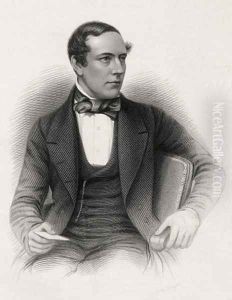Kilburn, William Edward Paintings
William Edward Kilburn was a British photographer and engraver known for his portraits of royalty and his pioneering work in early photography. Born on 28 May 1839 in London, England, Kilburn was part of the Victorian era of innovation and exploration within the arts and sciences. He was the second son of Edward Kilburn and his wife, Mary Kilburn, née Butt. His father was also a notable engraver, which likely influenced William's early interest in the visual arts.
Kilburn opened his own photography studio in London by the 1860s, following in the footsteps of his older brother, who had also established a photographic business. William Kilburn quickly gained a reputation for his high-quality portraits. In 1846, he took one of the earliest photographs of Queen Victoria, and he was later appointed as a Miniature Painter in Photography to the Queen.
He became well-known for his daguerreotypes, a form of early photography that produced a single direct positive image on a silvered copper plate. Kilburn's portraits were characterized by their clarity and attention to detail, which made them popular among the British elite. He was among the first photographers to take images using the calotype process, which allowed for multiple prints from a single negative, a significant advancement from the one-of-a-kind daguerreotypes.
Throughout his career, Kilburn exhibited his work widely, including at the Great Exhibition of 1851 in London, where his photographs were displayed in the Crystal Palace. His work was also shown at the London International Exhibition of 1862 and the Paris Exposition Universelle of 1855, helping to cement his international reputation.
Kilburn's contributions to photography extended beyond his studio practice. He was involved in various photographic societies and was a proponent of improving photographic techniques. However, the latter part of Kilburn's career was marked by financial difficulties, and he eventually declared bankruptcy in 1875.
William Edward Kilburn retired from photography in the late 19th century, and he lived until the age of 77. He died on 15 January 1916 in London. Today, Kilburn's photographs are considered important historical documents, providing insight into Victorian society and the early development of photography as an art form. His works are held in various collections, including the Royal Collection, the National Portrait Gallery in London, and the Victoria and Albert Museum.
